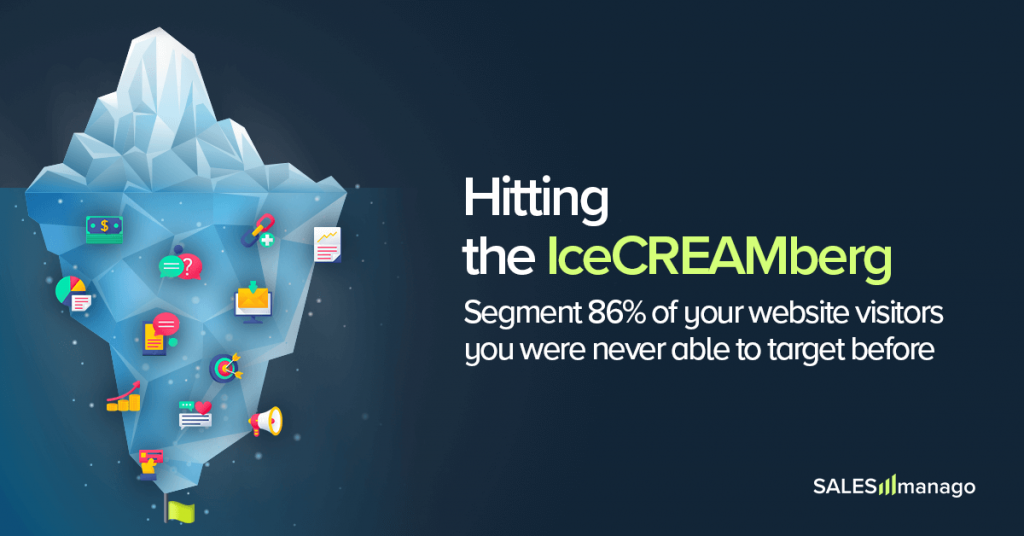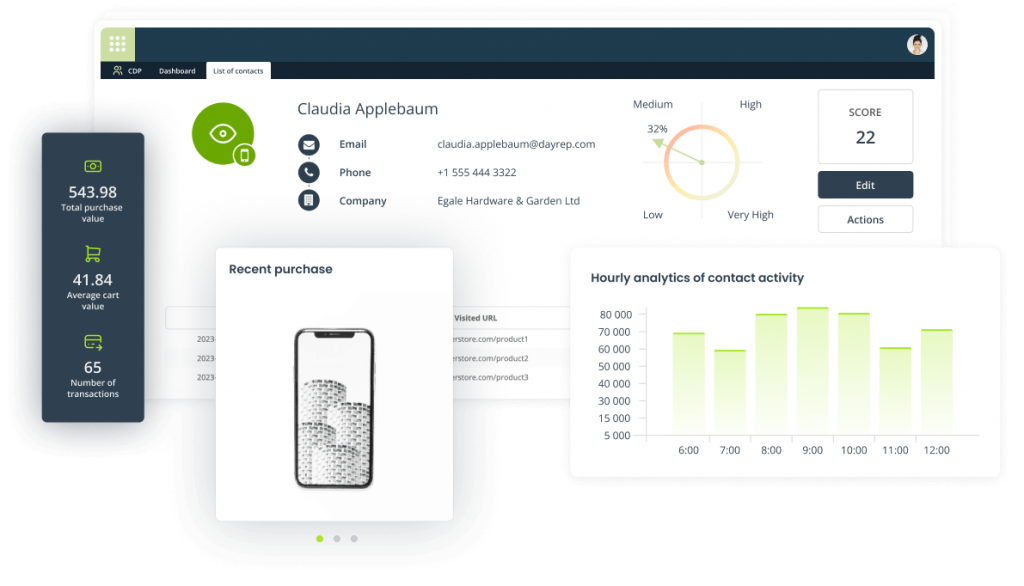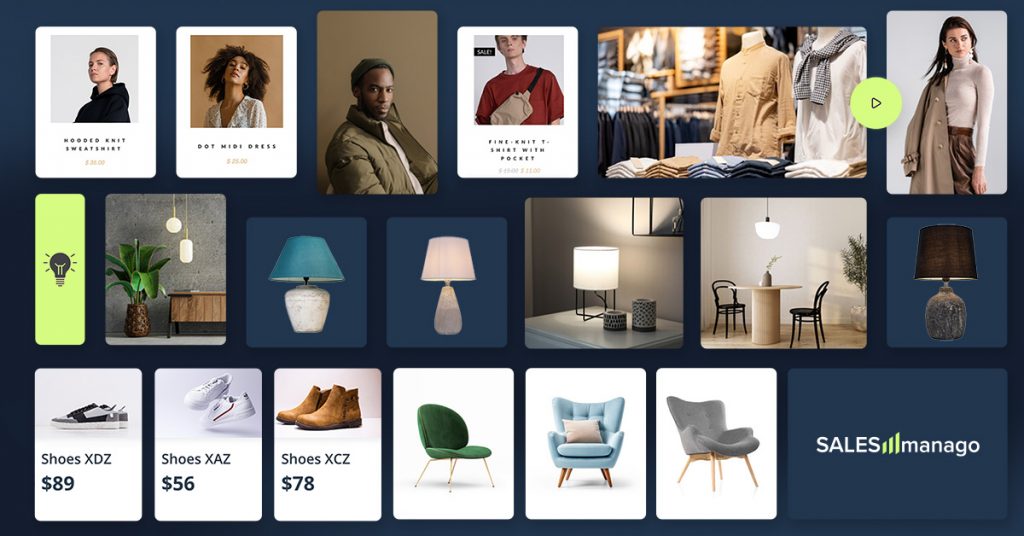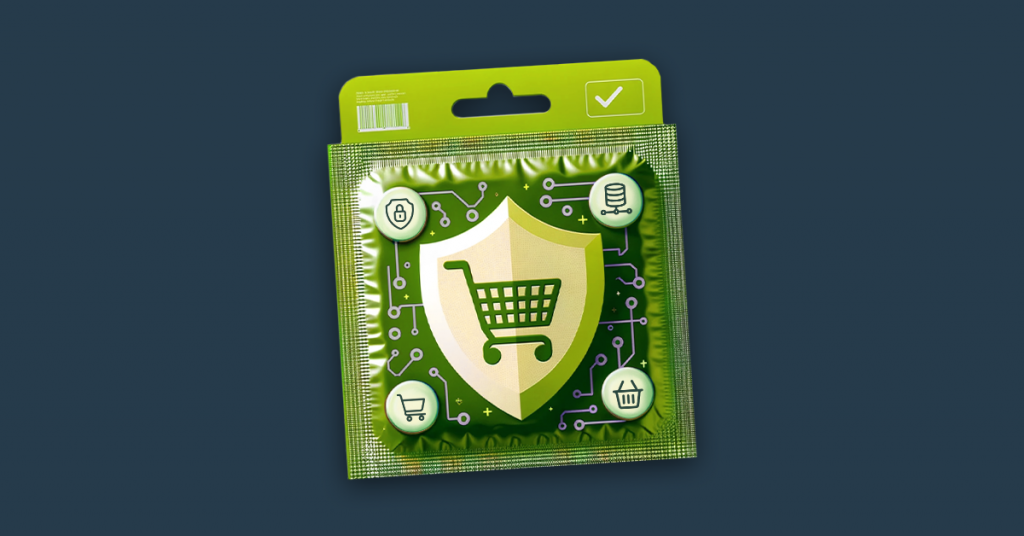Email marketing is dead? Email marketing is no longer sexy, dethroned by social media and mobile apps? We smell a lot of BS in such declarations. Email Marketing still shows the highest ROI of all marketing strategies, reaching 4,300% (Direct Marketing Association). It also still happens to be a channel preferred by users for getting marketing offers.
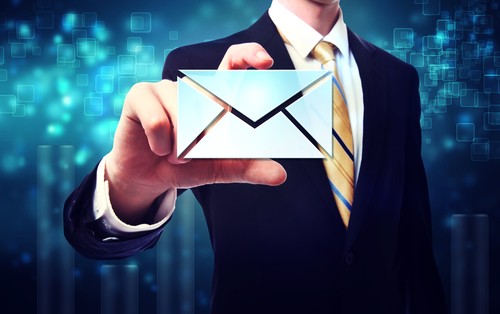
Benefits of Email Marketing
Email remains the most profitable and cost-effective marketing channel. See more of its advantages:
- Low cost (also in time and effort),
- Huge ability to personalize,
- Possibility of frequent communication,
- Easy user segmentation,
- Easy testing and monitoring,
- Possibility of tracking individual user’s responses,
- Environmentally-friendly,
- Sales potential (when compared to social media, which mostly build engagement, but don’t sell).
Customers love emails
58% of clients declare that email is their favorite way of getting offers and marketing communication. At the same time, 32% of them would like to receive fewer messages due to their repetitive character. Respondents in Adobe survey say that they spend 6 hours per day checking their emails. Mostly they do it simultaneously with other activities, when:
- Watching TV (70%),
- In bed (50%),
- In the toilet (42%),
- During a phone call (43%),
- When driving a car (18%).
This ebook discusses exploiting the potential of email marketing to its fullest. It’s still the most powerful tool in your arsenal to build relationships and sell.
Stats
- The total amount of inboxes in the world is going to reach 4.3 billion in 2016.
- It’s 3 x more , than the number of all Facebook and Twitter accounts together.
- 70% of people open emails from companies in search for coupons or discounts.
- Average users get 416 commercial messages per month.
- Businesses that send more than 100 000 email per month see 94% ROI.
- 66% of online shoppers made a purchase after receiving an email.
- Marketers spend around 15% of their budget on email marketing.
Trends in Email Marketing
1.Mobile
According to Litmus, 49 % of emails are opened on mobile devices. 67% of smartphone owners use them to check their email. Gmail customers are most mobile, as 75% of them use email on their mobile devices. Picture yourself that audience, knowing that Gmail has 900 million users. A trend develops dynamically: a number of emails opened on mobile devices increased by 180% in last 3 days.
2. Personalization
Consumers’ expectations towards messages from the brands changed. They don’t want catalogue-like newsletters anymore but look for dynamic relationships with companies that can interact with customers. That’s why transactional emails (messages sent individ- usually to user in response to her action, like welcome email, registration confirmation email, abandoned cart rescue emails) show 2 – 5 x higher efficiency (Experian). Personalized emails reach 29% higher Open Rate and 41% higher Click-Through Rate when compared to bulk messages.
Today actual users – their decisions and preferences – influence marketing communication more than ever before. With the popularization of Marketing Automation software, marketers obtained tools to track and analyze customers’ behavior and use that knowledge in campaigns, shaping the messages according to what individual recipient needs. A/B tests are another method for empowering customers and letting them decide that kind of messages do they want to receive. With new equipment in their toolbox, marketers abandon dreams of finding one universal recipe and focus on learning more about their actual audience.
3. Blurring difference between B2B and B2C
Serious, boring messages sent to B2B customers, sent in working hours, and lively E-commerce newsletters with coupons? Such approach doesn’t apply to contemporary marketing landscape.
87% of users check their business and personal emails at the same time. We integrate account and read personal messages at home and business at home. Is there anyone who can maintain a healthy work-life balance?
Also, more and more B2C and E-commerce companies adopt B2B strategies (like Lead Nurturing or webinars) in response to the emergence of a prosumer. Customers treat each purchase professionally; even if they buy a toothbrush, they do research, compare prices and crave for more knowledge. At the same time, B2B companies stopped using too official, stiff and boring language, attempting to speak to their customers more human-like.
10 Commandments of Email Marketing
1. Send emails to right people
To whom are you sending your messages? That’s the first question you have to ask. Simply put, delivering the message to the right person guarantees the success. But how to do it?
Grow your email list organically
50% of marketers admit that the quality of data they work on lowers the efficiency of their campaigns. The condition of data problem stems from quantity over quality approach when it comes to growing a list. Organic methods, even if they don’t deliver spectacular effects immediately, still work best in the long run as a solid ground for further campaigns. On the other hand, the list full of bought contacts or addresses of people who don’t want to get your messages can cause a disaster.
It results in poor OR and CTR, not to mention the risk of your emails being marked as spam, what will impact your reputation and deliverability of messages. Building big fat list in a non-organic way isn’t worth the risk it entails. Remember to ensure list quality with regular data-cleansing practices (more on that below).
Segment your list
Using tags in your Marketing Automation Software, you can easily group your contacts into segments and prepare dedicated, precisely tailored campaign for each section. For example, you can send a message to loyal customers only, or to inhabitants of a given city, or to people who bought a particular product or used a particular coupon. Hence you offer more relevant and more interesting emails, what increases the likelihood of opening them. Also, you spare customers unnecessary messages: thanks to that method, you don’t send information to the whole database, but only to those who might find in useful.
Use dynamic 1-to-1 email
Dynamic 1-to-1 emails are delivered to an individual user automatically and are related to her behavior. Examples? Message with products from the abandoned cart or discount for last viewed items. They show 621% higher conversion, rates because they match user’s needs at the moment.
Combine many forms of emails
Don’t drop your traditional newsletters yet! We talk a lot about contact segmentation and personalized 1-to-1 emails to let you see how many means of communication you have at your fingertips. Combine many forms of emails, including dynamic emails, Lead Nurturing messages, newsletters to the whole database and more. Such diversity will also make your communication more interesting to recipients. Stick only to one rule: remember to whom are you sending that particular message. Keep that in mind then creating an email.
2. Choose a right moment for delivery
We all know Super Wednesday myth: as if there were one magical moment of the week when all our customer read commercial emails and are in the mood to act on them. We struggle to find the perfect day.
But the Holy Grail of a ‘one sizemoment is But the Holy Grail of a “one size fits all ideal timing” doesn’t exist. Sorry to disappoint you, but the only way to achieve success is to operate not by abstract universal rules, but according to your customers’ behavior: send messages when a person is most active online. It can increase your revenue per email by 187% (as in eBags e-store).
23.63% of emails are opened within an hour from delivery. That shows how important finding the right moment is.
3. Skillfully adapt persuasion
How to read messages people read, or 3 Lessons from Aristotle
No matter what you want the recipient to do (register for an event, use a free trail, bought something), you face a persuasion problem. And to find the most competent persuasion expert, we must go back to IV century BC to meet Aristotle and learn the structure of a rhetorical argument.
According to Aristotle, to persuade somebody, a speaker or writer must include 3 elements in her speech or text:
Ethos: or the speaker/writer herself. You must earn credibility to convince the audience that listening to you is worth their time. What can you show for yourself? Are you an expert? Maybe some of your experiences make your case plausible? For email marketers, it means that you have to earn trust and build a reputation. You can do so with a systematic delivery of great content, with showing reviews of satisfied customers or awards. Why are you trustworthy is the first question your audience asks, so prepare your answer.
Pathos, or emotions and empathy. To convince somebody, you must show that you can feel for her, that you understand her situation and can put yourself in her shoes. Logos, or rational reasons. When user trusts you and feels the emotional connection, you still need to give her measurable, logical reasons to do what you want her to do. The point of Aristotle’s idea was to refer both to emotions and to the rational mind and to build your credibility. The fusion of these 3 elements creates an irresistible creation.
Your emails
Seems a little too philosophical? So let’s practice. Take some of your newsletters and analyze them. Investigate even the tiniest elements. What purpose do they serve? One of listed above? Or another important aim? Or maybe they just clutter your message, distracting the customer from the offer? Try to spot also which Aristotelian element are underrepresented in your emails. Don’t you stress rational arguments too much, neglecting emotional side of your customers? Are you trustworthy, basing on your emails?
Offers
More than a half of consumers declare that they subscribe to companies’ newsletters to get coupons, discounts and bonuses for loyal customers. That’s your core argument and a real value you can deliver.
4. Dedicate more time to craft the subject line
33% of users make a decision about opening an email basing solely on the subject line: if it doesn’t seem interesting, they move the message to the trash. Think of a subject as of a gate, through which users lets you in. You have to convince her that it’s worth it. Although marketers know these stats well, their practice belies theory. 90% of them admit that they wish they spent more time on crafting the subject line. So below you will find tips on how to change it.
Even if you developed a pretty good line, prepare variations on it: move words, try synonyms. You can get carried away with your imagination: don’t toss even most absurd ideas away, just let your creativity work.
- Make a list of words and numbers that must appear in the subject line
See how they look in different configurations:
– 10 Ideas for Increasing Sales, How to Increase Sales?,
– Do you cannibalize your sales too?,
– Everything you wanted to know about sales but were afraid to ask, Secrets of successful salespersons… Try how many combinations you can think of.
Check what your customers think, don’t rely on your judgment.
“Mark, do you cannibalize your sales?”
Sounds like a personal question. It’s a simple trick to engage the customer and gain strategic advantage. Research confirm the thesis: emails with personalized subject lines show 22.3% higher OR when compared to bulk messages.
- Characteristics of a great subject line. A great subject line is:
Useful: refers to possible improvement or benefit for recipient.
Specific: contains precise information.
Unique: shows originality.
Urgent: demands an action right now.
When you combine these 4 features, you get a subject line masterpiece.
5. Include a clear and direct CTA
Define the purpose
Aristotle taught us that each element of an email must serve a precise aim, remember? Your message must have one in the first place. What do you want the recipient to do?
- Should she download an ebook?
- Or take a look at the price list?
- Register for an event?
- Buy a product?
When you know the answer, craft a direct and clear Call To Action. Apply the “Don’t make me think” rule: be specific and don’t leave any room for misunderstanding.
- Use a verb. It might take a form of imperative (“Download”, “Buy now”) or indicative (“I save $10”, “I want to boost conversion”); you can use either “You” or “I” message. Run tests to find out which one works best for your audience.
- Be concise. An ideal CTA should consist of 2 – 5 words.
- Create a sense of urgency, for example with expressions “Today” or “Now”.
Vagueness is a common problem with CTAs: when you say only “Free ebook,” it takes longer for a user to figure out that she should download it. Make it an instruction, a clear call. Scientifically speaking, orange and green color of buttons perform the best. The color itself is not as important as contrast: button be visible against the background and catch the eye.
6. Choose appropriate software
Creative and conceptual part of the process is one thing; the second is putting the campaign in practice according to your plan. You need tools that will realize every single piece of your idea: aesthetics, mechanics, or time of delivery. It must be able to execute all types of messages you want to send.
Marketing Automation Platform with Email Marketing Feature, for example, SALESmanago, is an optimal software for marketers willing to implement advanced and personalized campaigns. Why?
You collect all the data in one place. Thanks to integration with CRM, you have a full 360-degree picture of all your contacts in one location, what facilitates exchanging information from many sources. Your emails will be more precisely personalized because campaigns will be based on more complex data. At the same time, it works the other way round: data on users’ reaction to messages will enrich behavioral analytics and help you deliver more relevant content in other channels.
It’s convenient. The fewer tools you use, the easier it is to apply them in everyday life. You don’t waste time on learning new systems but can focus on mastering a few platforms, what increases your efficiency.
Multichannel experience. When you have one basic Marketing Automation platform, it’s way easier to have a bird-eye view on all the actions you perform, what helps offering a cohesive multichannel experience at multiple touchpoints. Don’t separate your campaigns, but try to integrate them. Emails, push notification, social media, contact will salespeople – it all should go together.
How to choose right software?
There is a vast array of platforms to choose from, with each of them offering many options. Also, all of them are pretty sophisticated and advanced tools, taking months to master, so investing in a wrong one might cost you months of lost time. It all can be intimidating. Finding the right platform for your company is a difficult task, but the tips below might help.
- Make sure that operating the system is intuitive for you. Ask how much will it take to learn it.
- Use the trial to test all the actions you will want to execute. Be inquisitive.
- Should I look for savings? Email marketing is the crucial part of your marketing activities, so invest in a tool that will help you unlock the full potential of the channel. It’s always a good idea to pick a SaaS (Software as a Service), what allows you to be more flexible and resign from the platform that doesn’t drive results.
7. Take mobile into consideration
In Marketing Sherpa report, 58% of marketers declared that mobile devices are the most significant trend defining Email Marketing. Yes, we know that you’ve heard that dozens of times, yet we will repeat.
More than responsiveness
When we talk about mobile friendly messages, we mean much more than responsive design (and if you use SALESmanago and our responsive email creator, you know how easy it might be even for a person who doesn’t know HTML). The style of consuming information is entirely different on mobile devices, and that’s what you should address. How?
Write shorter subject lines. On the smaller screen, you must reveal your offer faster. Focus on first 3-4 words and try to tell the clue as soon as possible.
No more than 600 px width. It’s optimal size for convenient reading on various devices.
Use big font. The small font on a small screen will get … well, smaller. Reduce your menu bar: it might be difficult to navigate on mobile.
More than an email
Optimizing your email communication for mobile doesn’t end at crafting your messages. It also involves a website and landing pages: are they responsive? How about subscription forms? Are they visible (most often designers put the box on the right side, and it might be difficult to find it on mobile, maybe go for pop-ups?)?
Think about everything that happens around the message, not only about the message itself.
8. Take care of database hygiene
Each year 25% of your database decays naturally: people change jobs, email providers, etc. It happens usually and no reason to be scared: just prepare for it. We recommend 2 regular practices to address the problem: building your list organically (so you won’t find random or inactive emails) and data cleansing (e.g. with win-back campaigns).
Build your base organically
Don’t add purchased emails to your list. Get them from people who want to receive messages from you. But how? Here we list the most dominant strategies.
- Subscription during the purchase. It’s the most efficient way of obtaining email addresses,
- Large and clear subscription form not only on your home page but also on other pages,
- Mobile app,
- Registration on webinars and events,
- Contests requiring giving an email address.
Just remember: choosing shortcuts in Email Marketing can backfire. Try to find your audience instead of forcing people who aren’t interested in listening to you.
At least once in a year run a win-back campaign addressed to contact who haven’t been active (didn’t open your messages, didn’t visit your website). You can identify them easily with Marketing Automation software and issue a dedicated email just for them. It can contain a special offer or a direct question: “Do you want to be still on the list?”. The point of the win back message is to remove contacts who don’t respond to it: no reaction means that either email address is wrong or inactive, or that recipient isn’t really into your products. In both cases, it’s better to remove such contacts.
Why scrub your database clean?
Marketers often underestimate the power of systematic data cleansing. They say: “It doesn’t cost me a penny to have these inactive addresses, and they don’t hurt. And maybe one day some of them will respond?”. But this way of thinking is a huge mistake. Invalid emails don’t only increase the volume of your database without producing any benefit; they harm your
business! Firstly, many inactive addresses obscure your analytics and make it less reliable:
- you don’t know how many real recipients do you have, so your OR and CTR might be,
- unproportionally low. Another risk are spam traps: inactive inboxes are often turned into,
- ambushes for spammers (who are known for neglecting database hygiene) to get them blacklisted.
9. Don’t be a spammer
21% od recipients mark messages as spam even if they know that the given message is not spam. Why? Out of irritation: apparently they’re angry with too many irrelevant messages or difficult to find unsubscribe button. As an average consumer receives 150 – 300 emails per day, she can be furious with another unnecessary information. Keep that in mind next time you will want to issue a campaign to a purchased base.
0,2% complaint rate
Complaint rate is an amount of users who report your message as spam. If the percentage of complains exceeds 0.2%, you will be marked as a spammer by email providers. 0.2%: it’s 2 people out of 1000.
Customer behavior
Don’t use a word “free” or “sale” or “%” in your subject line or you will get marked as spam – do you remember all these hypes? Now we know that the only criterion is actual user behavior. If you send them messages they expect in the form they like, there is nothing to be worried about.
Vital rules
- Permission: send emails only to people who agreed to receive your messages,
- Say hi: welcome messages help customers remember that they subscribed,
- Keep balance: between sales and edutainment. Sending offers all the time won’t make user excited about your messages, but focusing only on delivering valuable content might undermine sales,
- Run list cleansing campaigns described above,
- Personalize communication, so recipient feels that the message was crafted especially for her.
Reasons why customers mark you as spam?
- Too many messages,
- Difficulties with unsubscribing,
- Content of the messages differs from expected,
- Fear that emails will be sold to third parties,
- Messages serve different purpose that one declared i CTA.
10. Measure and Conquer
One of the crucial advantages of Email Marketing is the possibility to track easily customers’ reactions. If you use Marketing Automation platform, you can not only monitor the performance of the whole campaign and amount of clicks and opens, in general, but also discover how each user reacted. It creates an amazing space for marketers to create personalized dedicated campaigns.
Most important direct metrics
CTR: most popular metrics for measuring successfulness of the campaign. It tells you how many people clicked the link in your email (to be precise: it’ the percentage of clicked messages to opened ones). Marketers often use it for A/B testing.
OR: describes how many users opened your message.
Conversion rate: tells you how many users performed an action we asked them to do (like purchase or registration).
Bounces: indicate to how many emails your message has not been delivered. We divide them into soft bounces (when the reason message can’t be delivered is temporal, like full inbox) and hard ones (when the cause is permanent, like lack of such email address). A number of bounces is a real acid test of the list quality.
Indirect metrics
Keep track of how Email Marketing campaigns influence the overall performance of the company.
74% of businesses measure efficiency of Email Marketing with a number of leads generated.
72% of them – measure efficiency of Email Marketing with sales.
Advanced Email Marketing Campaigns Using Marketing Automation
Best practices
Below we list the best Email Marketing practices you can use with Marketing Automation.
Welcome message
74,4% % of customers expect welcome message after subscribing to a newsletter. It helps prevent the situation in which users get first emails two weeks after subscribing and can’t remember the company.
20% of businesses send emails with a content of abandoned shopping cart. It works, because of a simple reason: we offer something that customer wants to buy. She was motivated enough to put items in her cart. Such messages show CTR higher even by 621% when compared to traditional bulk messages.
Educate customers, deliver valuable information and help make well thought-through decisions, so they feel comfortable and secure about their purchases.
Use customer’s name
That simple move improves customers’ mood in the spot and helps you win time to persuade them. Use names in subject lines and the content of an email.
Customer segmentation
Show your audience that you understand their needs. Send different offer to loyal customers and different to freshly won users. Also group them according to interests, average cart value (that way you can send different offers to clients who like to spend a lot at once and those who prefer making numerous small purchases) or a place they live in.
Dynamic 1-to-1 email with offer of viewed products, or complimentary products, or tailored to purchase history.
A couple of visits give you amazing insight into users’ interests. That knowledge will allow you to deliver relevant content and offers to each contact. With dynamic 1-to-1 emails, you can send each user a dedicated message with offer tailored to hr interests and to the history of bought and viewed product.
Best practices
Advanced analytics – thanks to advanced analytics provided by Marketing Automation you can track efficiency of the whole campaign, as well as the behavior of individual users.
Optimizing time of delivery – as we wrote above, matching a time of delivery to particular user’s activity is great, but you should also take care for finding the moment of purchase decision. You can spot it with scoring: a tool that measures customers’ engagement.
Why to Use Marketing Automation in Email Marketing
There are 5 reasons why you should consider using Marketing Automation platform for your Email Marketing.
Analytics: use synergy between Marketing Automation and Email Marketing. Transactional and behavioral data gathered in the system will help you to address more precisely tailored emails and at the same time responds to emails will deepen customer’s profile.
Multichannel marketing: offer real multichannel experience, at multiple touchpoints and across many devices. With all the data on customers at one place, it will be much easier to create cohesive campaigns what address one the person in many places, with all the messages building one coherent communicate.
True personalization: thanks to the platform you can personalize each single element of the message: from the name in the subject line to content and offer to the time of delivery, and much more.
Dynamic emails: as our clients’ marketing practice indicate, dynamic email show 496% higher OR and 977% higher CTR. It will help you unlock the potential of acquired leads.
Measurability. Thanks to Marketing Automation you can measure each element of your campaigns and indicate which ones are successful. Never waste your marketing budget again!




 Follow
Follow


![[New Feature] Shine the light on your hidden visitors with Spotlight](https://blog.salesmanago.com/wp-content/uploads/2024/04/1-9.png)
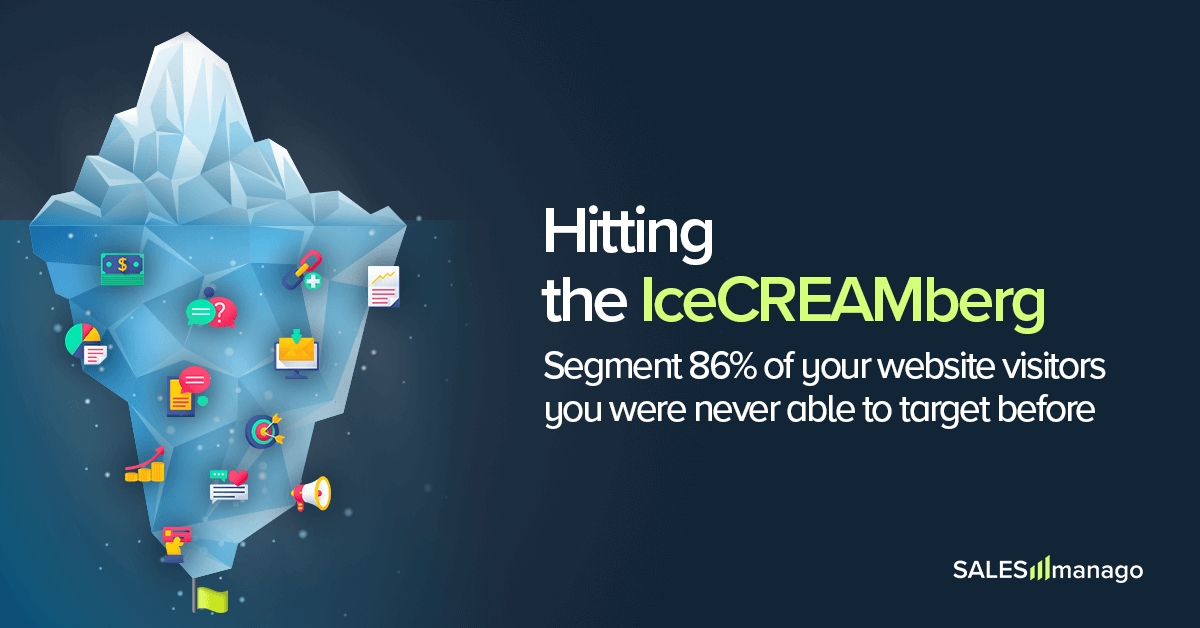

![[New Feature] Unlock Deep Behavioral Personalization with Product Collections](https://blog.salesmanago.com/wp-content/uploads/2024/03/1-3.png)



![[New Feature] Shine the light on your hidden visitors with Spotlight](https://blog.salesmanago.com/wp-content/uploads/2024/04/1-9-1024x536.png)
